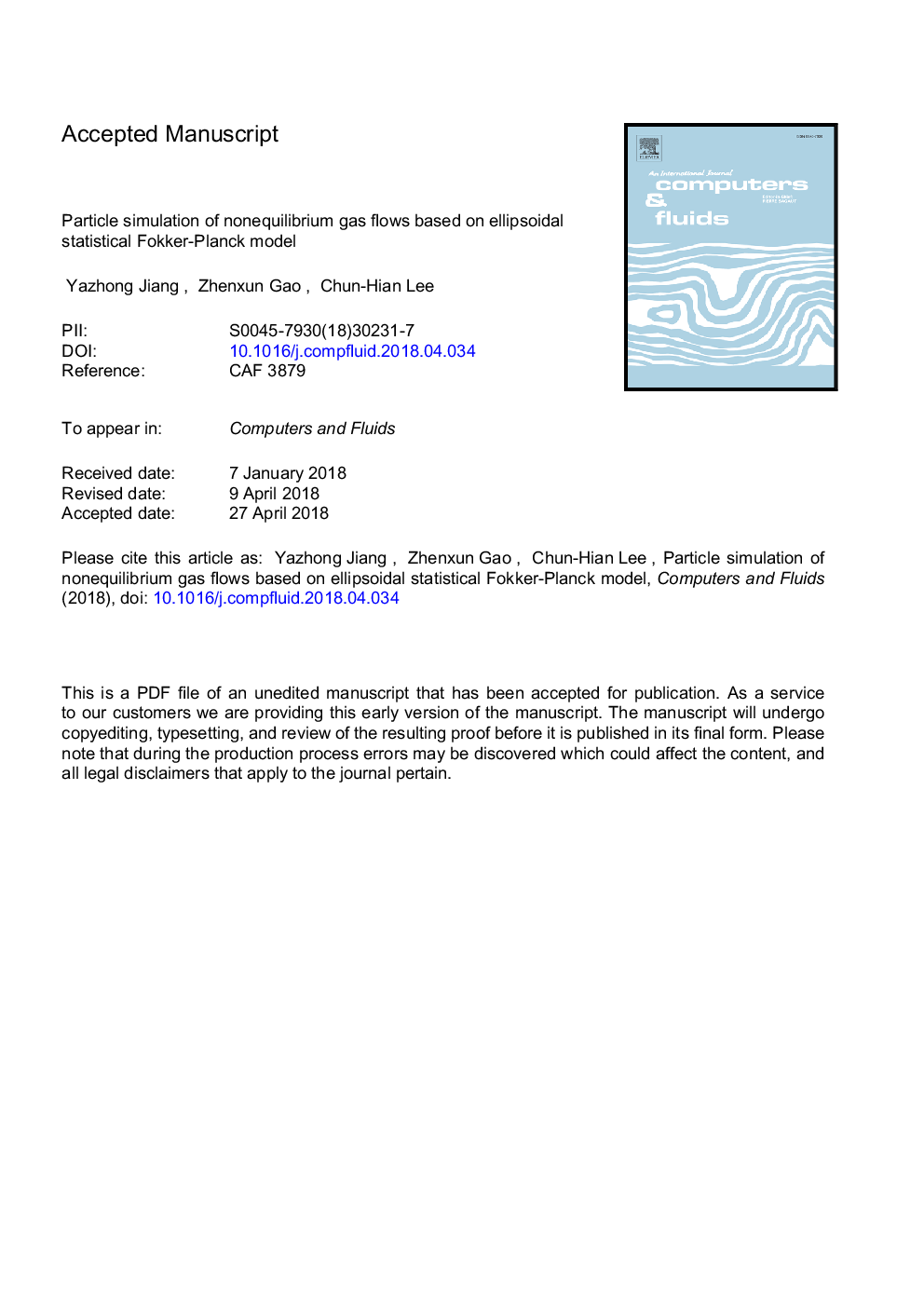| کد مقاله | کد نشریه | سال انتشار | مقاله انگلیسی | نسخه تمام متن |
|---|---|---|---|---|
| 7156003 | 1462641 | 2018 | 35 صفحه PDF | دانلود رایگان |
عنوان انگلیسی مقاله ISI
Particle simulation of nonequilibrium gas flows based on ellipsoidal statistical Fokker-Planck model
ترجمه فارسی عنوان
شبیه سازی ذرات جریان گاز غیرموجب بر اساس مدل فوکر-پلانک است
دانلود مقاله + سفارش ترجمه
دانلود مقاله ISI انگلیسی
رایگان برای ایرانیان
کلمات کلیدی
موضوعات مرتبط
مهندسی و علوم پایه
سایر رشته های مهندسی
مکانیک محاسباتی
چکیده انگلیسی
In order to improve the efficiency of particle simulation method for gas flows spanning the rarefied and continuum regimes, one promising approach is to employ the Fokker-Planck-type gas kinetic model. The ellipsoidal statistical Fokker-Planck (ES-FP) model treats the evolution of individual molecular velocity as a continuous stochastic process, which can be equivalently described by the Langevin dynamics where the forces acting on each gas molecule are a linear drag force and an anisotropic fluctuating force. By utilizing the exact stochastic integral solution of the corresponding Langevin equation, the ES-FP model is numerically implemented in a particle Monte Carlo manner. In a validation of the particle scheme, excellent agreement is obtained between the simulation results and the analytical solution for the same initial-value problem of ES-FP equation. The ES-FP particle method is used to simulate the relaxation process in a nonequilibrium gas, and agrees well with the direct simulation Monte Carlo (DSMC) method in the predictions of viscous stress and heat flux. Furthermore, extensive ES-FP particle simulations are performed for Couette flows at different Knudsen numbers ranging from 0.001 to 10, as well as supersonic flat-plate flows at different Knudsen numbers ranging from 0.001 to 0.1. Both flow fields and surface quantities are investigated and compared with the DSMC or theoretical solutions. In the ES-FP simulations, the Prandtl number of gas can be corrected, and the physical behaviors in different flow regimes can be properly captured. With reasonable agreement between the ES-FP and DSMC results, the ES-FP simulation is found to be more efficient than DSMC and can significantly save memory cost and CPU time, especially for multi-dimensional flows in the low-Knudsen-number regime.
ناشر
Database: Elsevier - ScienceDirect (ساینس دایرکت)
Journal: Computers & Fluids - Volume 170, 15 July 2018, Pages 106-120
Journal: Computers & Fluids - Volume 170, 15 July 2018, Pages 106-120
نویسندگان
Jiang Yazhong, Gao Zhenxun, Lee Chun-Hian,
